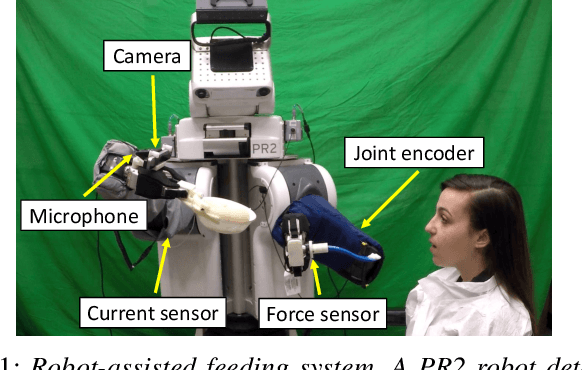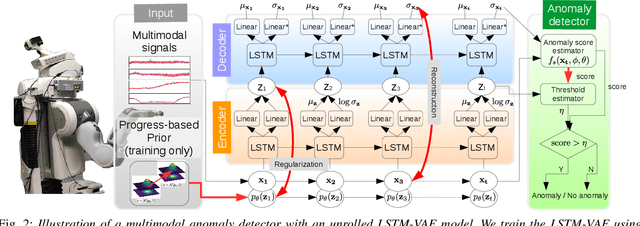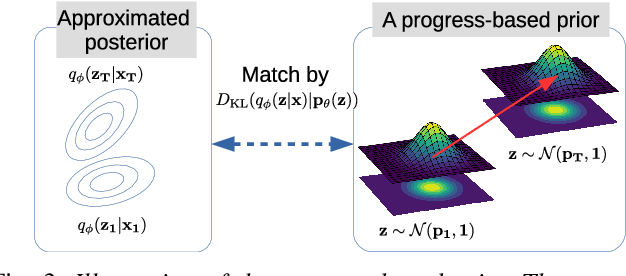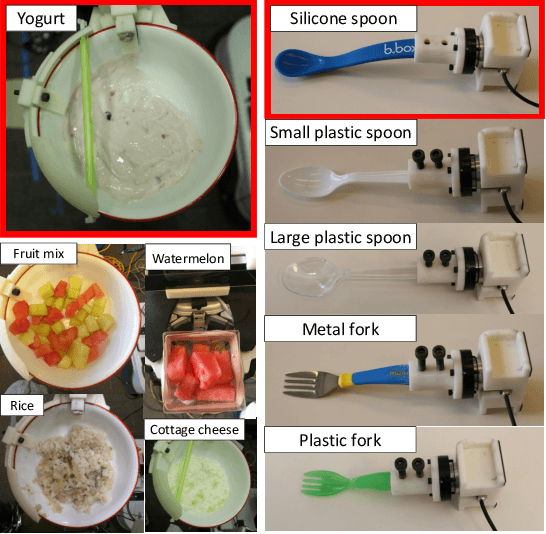A Multimodal Anomaly Detector for Robot-Assisted Feeding Using an LSTM-based Variational Autoencoder
Paper and Code
Nov 02, 2017



The detection of anomalous executions is valuable for reducing potential hazards in assistive manipulation. Multimodal sensory signals can be helpful for detecting a wide range of anomalies. However, the fusion of high-dimensional and heterogeneous modalities is a challenging problem. We introduce a long short-term memory based variational autoencoder (LSTM-VAE) that fuses signals and reconstructs their expected distribution. We also introduce an LSTM-VAE-based detector using a reconstruction-based anomaly score and a state-based threshold. For evaluations with 1,555 robot-assisted feeding executions including 12 representative types of anomalies, our detector had a higher area under the receiver operating characteristic curve (AUC) of 0.8710 than 5 other baseline detectors from the literature. We also show the multimodal fusion through the LSTM-VAE is effective by comparing our detector with 17 raw sensory signals versus 4 hand-engineered features.
 Add to Chrome
Add to Chrome Add to Firefox
Add to Firefox Add to Edge
Add to Edge